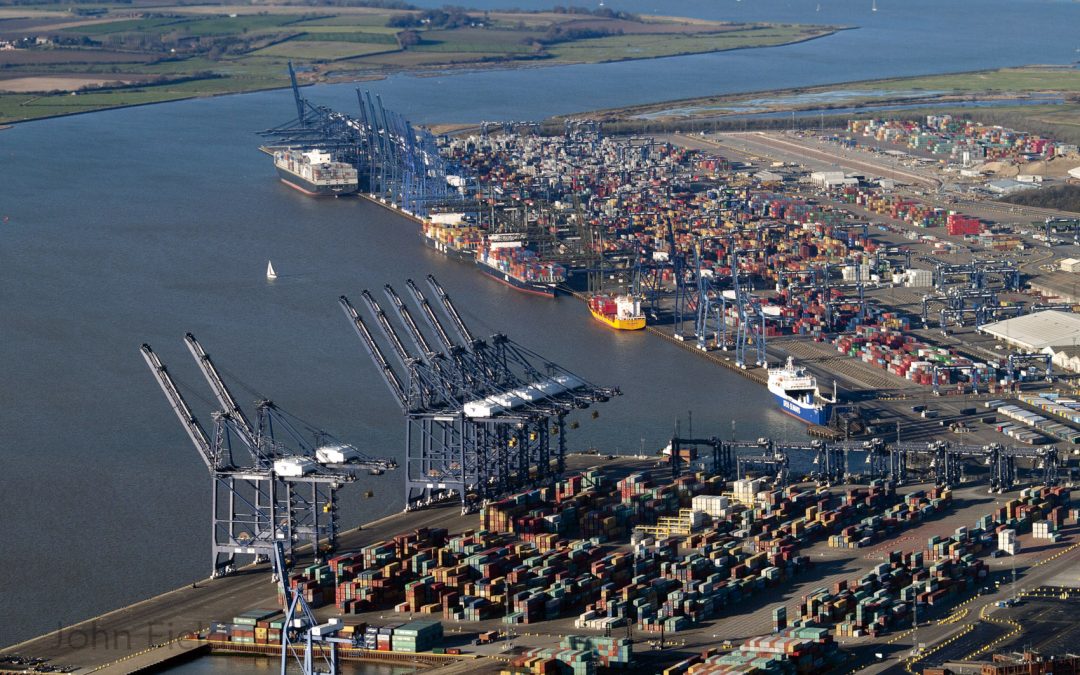U.S. seaports are having a terrible year, yet are seeing something of an importing resurgence at the same time.
Imports at some of the nation’s busiest container ports have been falling at a double-digit annual pace for several months. Yet business has been increasing month to month at many of the big gateways, and for many of the ports exceeds box volumes of 2019, before pandemic-driven buying sent shipping demand on a roller coaster.
The gap between the annual decline and the monthly growth pace is a sign of the hangover from the record cargo volumes that surged into the U.S. in 2021 and 2022, when importers rushed in furniture, electronics and other goods to meet enormous consumer demand.
Container trade on crucial Asia to North America shipping lanes fell 26% during the first quarter of this year compared with a year ago, said Lee Klaskow, senior freight transportation and logistics analyst at Bloomberg Intelligence.
“It sounds like the sky is falling,” Klaskow said. “But when you are looking relative to where we are today versus [before the pandemic] we are up mid-single digits.”
The mood is particularly upbeat at ports that are benefiting from a decadeslong shift in trade away from West Coast gateways, which has accelerated in recent years.
Imports at the Port of Savannah fell in each of the past six months, often by double digits, compared with year-ago levels. The declines mask a compound annual growth rate for imports of 5.2% over the past four years, according to port data. “If we can maintain that, we’re in good shape,” said Griff Lynch, executive director of the Georgia Ports Authority, which operates the Savannah port.
Shipping industry officials say the figures suggest a return to normal trade patterns rather than a cargo collapse. Jock O’Connell, an international trade adviser for economic consulting firm Beacon Economics, said the question is whether trade flows will be similar to those that ports handled just a few years ago.
Importers sought alternate routes into the country during the pandemic when massive backups of container ships in Southern California caused monthslong delays for freight. Some retailers and manufacturers that diverted goods to Houston, Savannah and New York-New Jersey have been rerouting goods this year while West Coast dockworkers negotiate a multiyear labor contract with employers.
“In a sense they’ve cut a new groove in the supply chain,” O’Connell said. He noted imports at the ports of Los Angeles and Long Beach were down 3.2% in April compared with 2019 levels. At the Port of Savannah, imports were up more than 11% from the same period. At the Port of Houston they were up almost 40%.
Shipping industry officials expect the labor contract talks, which have been going on for more than a year, will conclude with a tentative agreement soon. Port of Los Angeles Executive Director Gene Seroka said Thursday it will take months to see how much of the diverted freight shifts back to Southern California ports.
Bethann Rooney, director of the East Coast’s busiest port at New York-New Jersey, said she saw a positive sign earlier this month when one of the port’s large ocean terminals handled more truck traffic day after day than during the peak of the pandemic surge in cargo. “My mind was blown,” she said.
The New York-New Jersey port handled container volumes last year that planners had projected the port wouldn’t reach until around 2030. Rooney said she expects volumes will fall 21% this year, but that will still put the port at or above the growth trajectory laid out in the port’s 30-year master plan.
“I keep telling staff and industry partners, terminal operators and truckers, that this is not a reason for panic,” she said.
Source: Hellenic Shipping News






